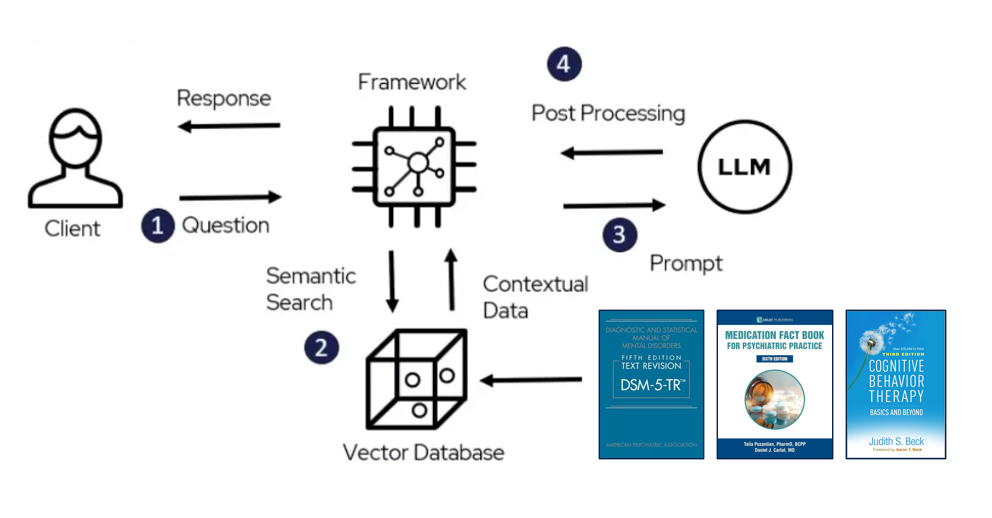Research Pillars
Digital Psychometrics
Measurement-based care (MBC) has the potential to improve the efficiency and efficacy of care delivery, but is limited by implementation challenges, limited interrater reliability, and limited familiarity. Artificial intelligence (AI)-based approaches have garnered significant attention for application to these limitations. To date, AI approaches demonstrated in the literature have had limited ability to interpret the heterogeneous nature of psychiatric “data,” which consists largely of unstructured text and speech used by clinicians to develop their assessments. More recently, novel models, such as Large Language Models (LLMs), have significantly advanced the state of semantic natural language problem and present new opportunities for automated interpretation of this data. Our group is investigating approaches to make use of these advantages to simplify deployment of MBC through the prediction of validated psychometrics, and to develop novel psychometrics based on wider-scale analysis of language and behavior.

EHR Phenotyping and Knowledge Fusion
The electronic health record contains a vast array of patient-specific information. The integration of data collected or produced by behavioral health professionals with that collected outside of this direct scope (such as primary care and other specialty encounters) is of particular interest for building a more comprehensive understanding of patient functional status. However, the most valuable information in these records for behavioral health is often unstructured, incomplete, and fragmented across systems and institutional boundaries. This problem is particularly acute for patients with serious mental illness (SMI), who frequently have encounters at disparate institutions. Though the Information Blocking regulations seek to enable access to these records by clinicians at the time of need, behavioral health records often remain blocked, complicating the provision of high-quality acute psychiatric care. Our group is investigating methods to extract accurate, pertinent information about treatment and behavioral functioning from disparate records, to integrate this information into formats that are accessible and efficient for providers at the point of need, and to use this information to make predictions and recommendations about treatment planning and therapeutic selection.

Autonomous Diagnostics and Therapeutics
Autonomous Diagnostics and Therapeutics
